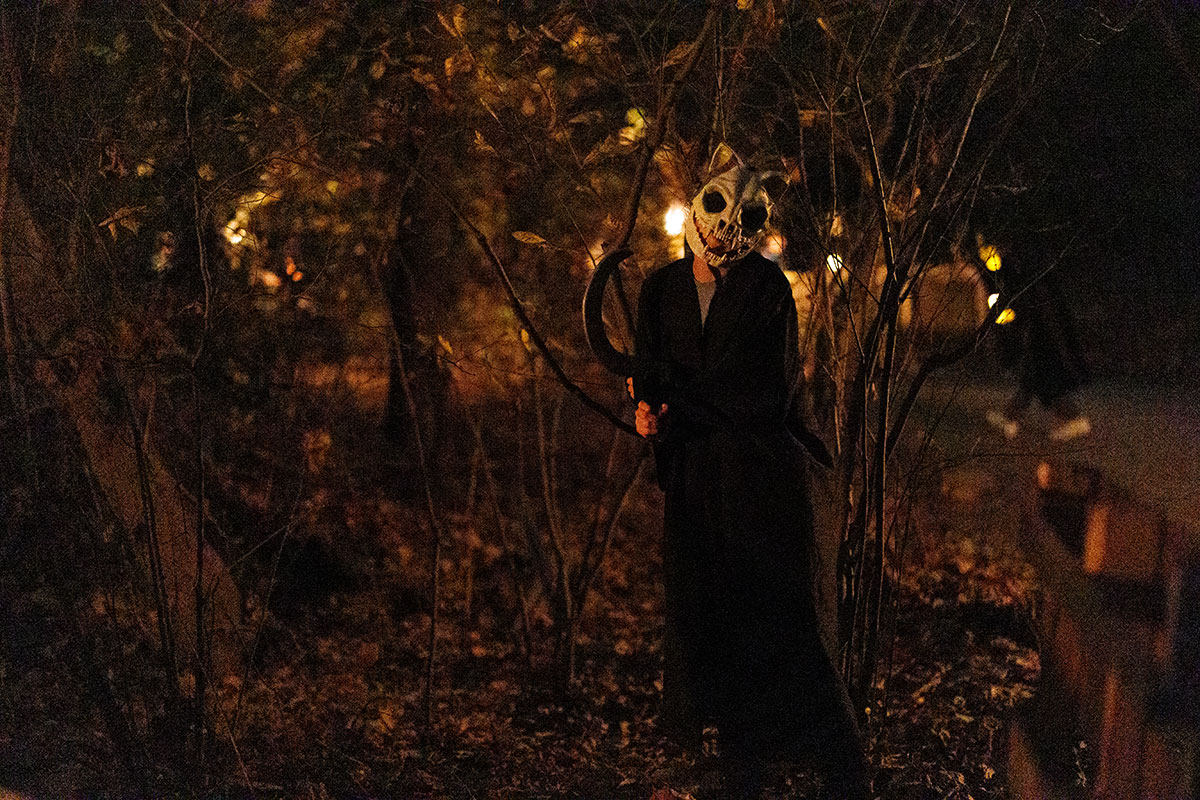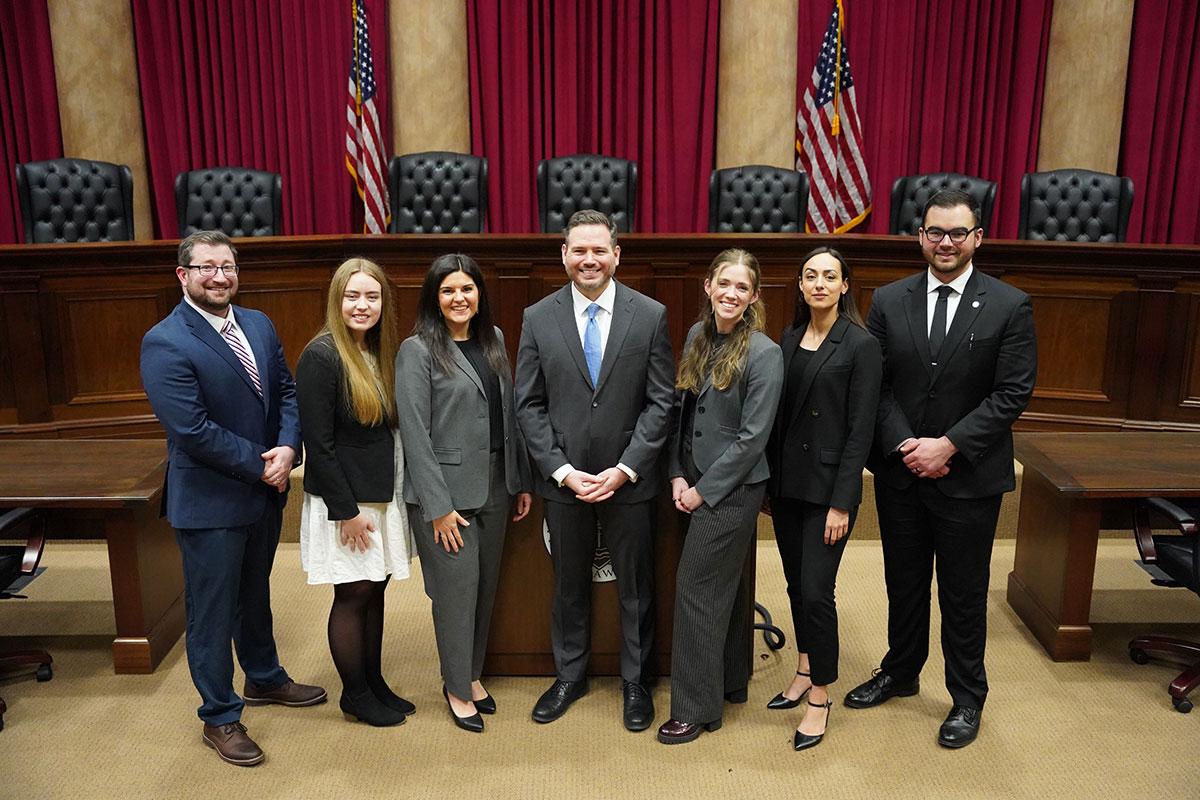Military students make special visit to WWI sites during history trip to Western Europe
June 22, 2023 : By Ryan Klinker - Office of Communications & Public Engagement
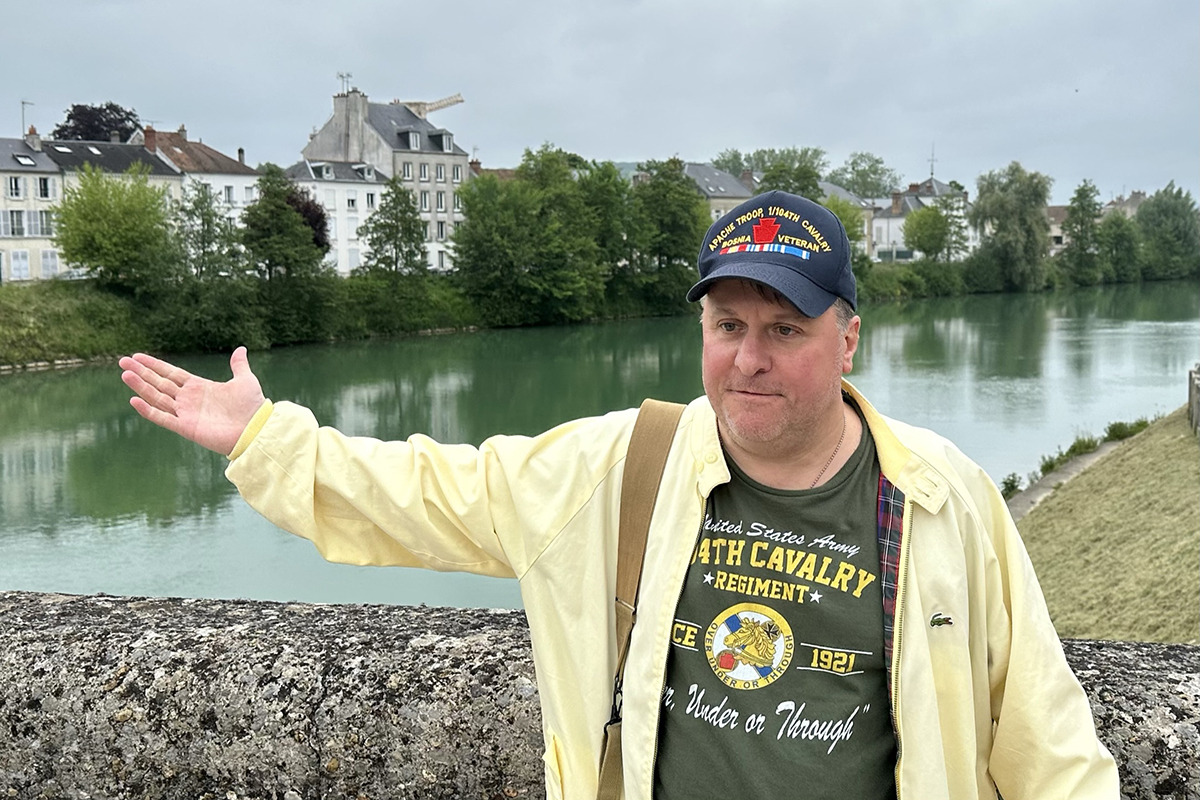
During a nine-day military history trip last month to Western Europe led by Department of History Online Dean Dr. Carey Roberts, a group of Liberty University students and one professor (most of them veterans) took an impromptu visit to two landmarks of American World War I history — Chateau-Thierry and Belleau Wood — to observe their own unique connections to that era in history.
After seeing multiple sites in London, crossing the English Channel to walk the beaches of D-Day in Normandy, and exploring Paris, nine of the 22 members of the Liberty trip saw an opportunity to use an open morning on the itinerary to quickly board a train toward both locations. The trip came in the days leading up to Memorial Day, creating an additional level of reverence for the sites they visited, some of them being the final resting places of their brothers in arms.
Adjunct history professor and Army veteran Christian DeJohn spearheaded the excursion and said the idea became somewhat of an adventure in rural France.
“We had three Army vets, three Marines, and a few civilians, and we sort of went on this joint mission to see these places,” he said. “The Army and Marines teach each other a lot, and we have sort of a rivalry, but it was a really cool example of how this group of Marines and Army vets worked together.”
Chateau-Thierry is one of the first places that the United States Army faced German forces in WWI, and atop Hill 204 sits a temple-like memorial to the American and French forces that fought to save France. The 3rd Infantry Division and 28th Infantry Division were two of multiple U.S. units at the battle, and the 3rd earned the nickname of “The Rock of the Marne” in honor of their firm stand on the banks of the Marne River against the Germans’ seemingly relentless push. Two members of the Liberty group, DeJohn and student Jacob Johnson, have served in the 28th and 3rd, respectively.
“When several other units were pushed backwards, parts of the 3rd Infantry Division held its ground, and I believe it was the French that gave the 3rd the nickname of ‘The Rock of the Marne,’” Johnson said. “Still today, that is a tremendous (point of pride) for the division. It was so awesome to stand there after having it become so ingrained in my head as a member of that same unit, just a little over 100 years later.”
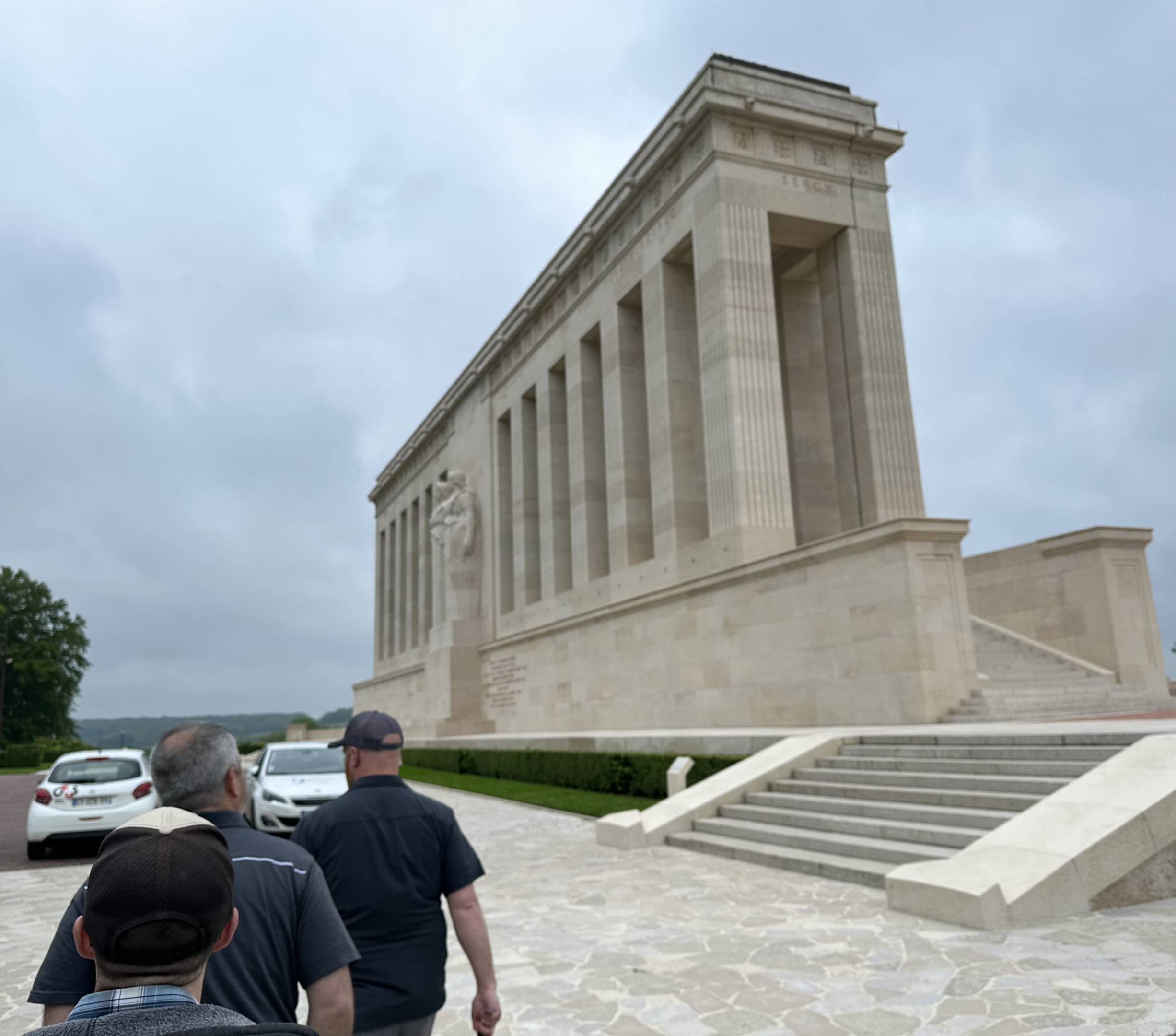
The group then walked to the American Aisne-Marne American Cemetery, where 3,000 Americans are buried, and the “Devil Dog Fountain” near the site of the 1918 Battle of Belleau Wood. For Marines, a visit to the fountain is considered a pilgrimage of sorts, and drinking its water is a tradition for those who make the journey. Its name comes from a moniker given to the Marines by the Germans at the time — “Teufelhunden”— and the term has become a point of pride among the Corps.
The fountain isn’t on a hill or part of a grand monument; it’s on private land owned by a local man who simply lets visiting Marines borrow the key to the gate surrounding the fountain. DeJohn recalled the caretaker quipping, “Only American veterans would go through all of this craziness and trouble to see this fountain.”
Clay Messick, a retired Marine studying political science with a minor in military history, said visiting the fountain was a valuable opportunity for him to participate in Marine tradition and engage with his family’s military past.
“Not many Marines ever get the opportunity to (visit Belleau Wood),” he said. “I have family members who served in World War II, mostly in the Pacific theater but some in the European theatre. As a veteran, as a Marine especially, our history is very important to us.”
Despite being an Army veteran, DeJohn drank from the fountain in honor of his late uncle, who served in the Marines in World War II and helped capture Okinawa in 1945.
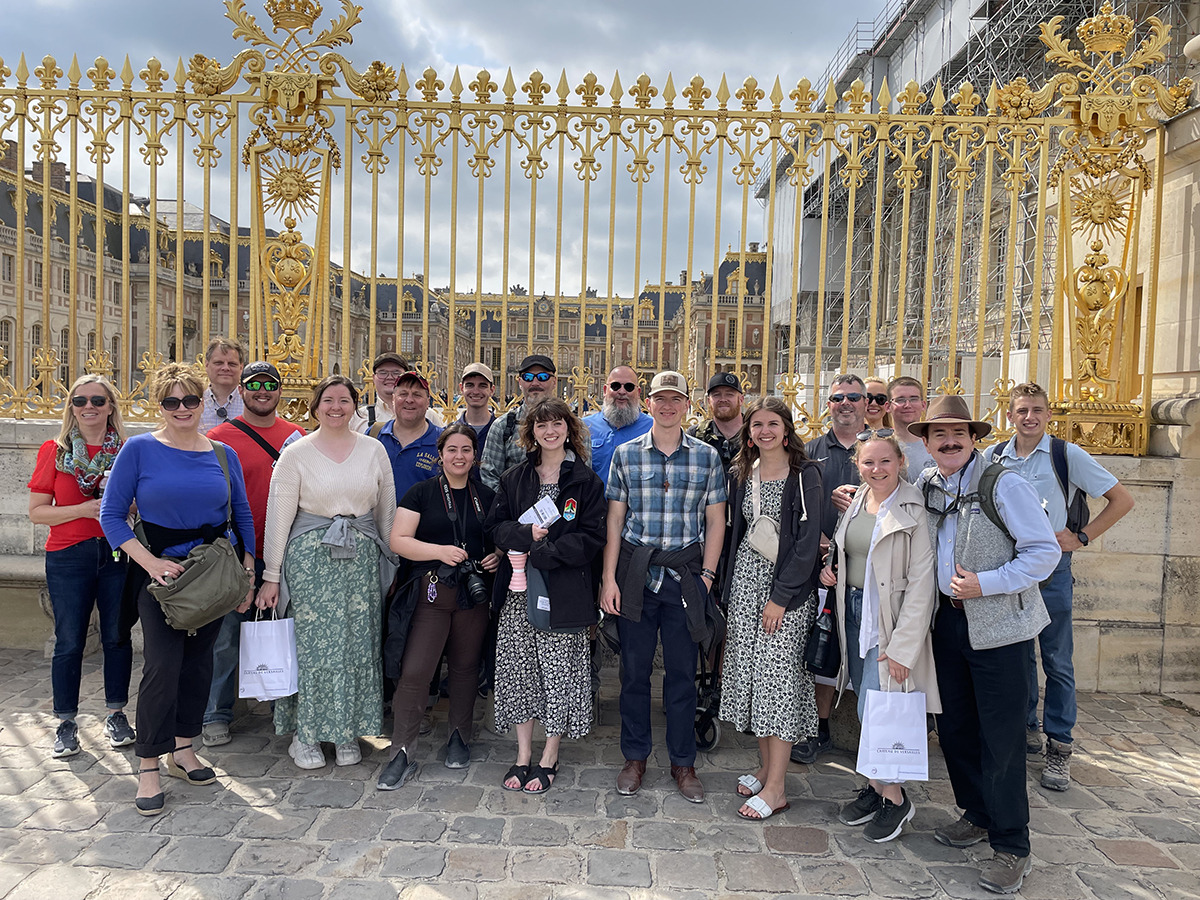 All three noted how much they enjoyed seeing the unique architecture of both France and England throughout the entire trip, visiting structures that remain standing despite wars and the passing of centuries. They highlighted their visit to Pointe du Hoc, a cliff on the Normandy coastline that became a site of fierce conflict during the D-Day invasion, when American soldiers climbed up the 100-foot cliffside while Germans fired down onto them. At the Normandy American Cemetery, featured in the World War II film “Saving Private Ryan,” the students saw the resting place of nearly 10,000 U.S. servicemen, their graves marked with white crosses.
All three noted how much they enjoyed seeing the unique architecture of both France and England throughout the entire trip, visiting structures that remain standing despite wars and the passing of centuries. They highlighted their visit to Pointe du Hoc, a cliff on the Normandy coastline that became a site of fierce conflict during the D-Day invasion, when American soldiers climbed up the 100-foot cliffside while Germans fired down onto them. At the Normandy American Cemetery, featured in the World War II film “Saving Private Ryan,” the students saw the resting place of nearly 10,000 U.S. servicemen, their graves marked with white crosses.
“(Pointe du Hoc) is still untouched from how it was in 1944, the concertina (barbed) wire is still hanging there on the perimeter,” Messick said. “We got to stand in a German bunker. I had expectations for the trip, but it honestly blew all of those away. We saw so much, but I want to go back and take in even more.”
“Through the shared love of Jesus Christ and history among our entire group, including multiple military veterans, it was truly amazing to see how quickly our online and residential students befriended each other and supported each other,” Roberts said. “The students were able to minister to each other in remarkable ways, and we were able to pay homage to the servicemen who crossed the Channel, stormed the beaches in 1944, took Normandy, and liberated Paris.”
“During the trip, many came to me to personally state how much they love their program, their instructors, and their university,” Roberts added. “They know better than most just how unique our programs and instructional approach can be.”
To a certain degree, Messick was able to follow the journey of the famous “Bedford Boys,” Company A of the 116th Regiment of the 29th Division from Bedford, Va., 25 miles from Liberty’s campus, who were some of the first Americans to storm the beaches of Normandy. Because Bedford experienced a larger loss of men per capita than any other town, it was chosen as the site of the National D-Day Memorial.
“While I was in London, I was reading about them training in England,” he said. “When we were on the ferry to France, I was reading about them embarking on the journey across to Normandy. As I read about the aftermath and all of the losses that (the Bedford Boys) took, I was visiting the American Cemetery there where some of them are buried. It really gave me a unique perspective.”
The trip was led by Department of History Online Dean Dr. Carey Roberts, who said these trips are an opportunity for students to meet one another and bond over their common faith and interests in history.
“Through the shared love of Jesus Christ and history among our entire group, including multiple military veterans, it was truly amazing to see how quickly our online and residential students befriended each other and supported each other,” he said. “The students were able to minister to each other in remarkable ways, and we were able to pay homage to the servicemen who crossed the Channel, stormed the beaches in 1944, took Normandy, and liberated Paris.”
He said he enjoyed meeting the students, many of whom are enrolled in Liberty’s online programs and took advantage of the opportunity to become better acquainted with classmates.
“During the trip, many came to me to personally state how much they love their program, their instructors, and their university,” Roberts added. “They know better than most just how unique our programs and instructional approach can be.”
The trip was sponsored by LU Send, the central hub of support for all student group travel and study abroad at Liberty.
